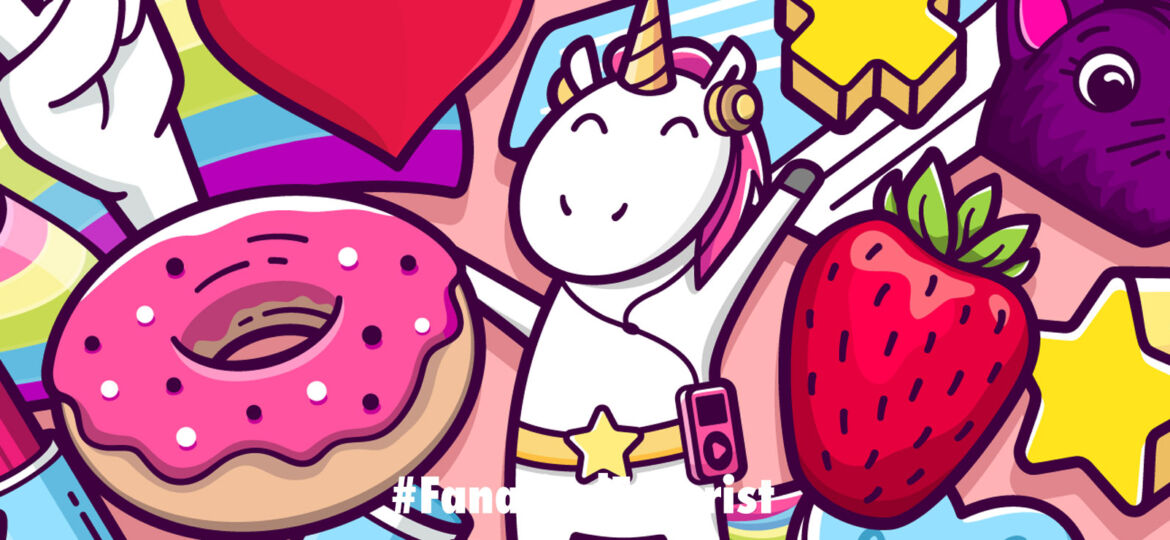
WHY THIS MATTERS IN BRIEF
NFT’s that allow people to sell any type of digital asset, from a tweet to a digital piece of artwork, are fuelling an unprecedented spending craze.
 Love the Exponential Future? Join our XPotential Community, future proof yourself with courses from XPotential University, connect, watch a keynote, or browse my blog.
Love the Exponential Future? Join our XPotential Community, future proof yourself with courses from XPotential University, connect, watch a keynote, or browse my blog.
In today’s world the idea of buying and owning physical things, such as cars or clothing, when you can just rent them on demand, seems increasingly quaint and outdated. And, up until recently artwork, even art made by Artificial Intelligence (AI) programs, has been largely immune from this shift with collectors spending vast sums of money to own physical things that they can touch and hang on their walls.
Now though all that’s changing as people become increasingly accustomed to being able to buy and own all manner of “original” digital assets, such as the Nyan cat emoji that recently sold for over $560,000, this digital dress which sold for $9,500 to an Instagrammer, and Jack Dorsey’s first Tweet that recently sold for over $2.9 million – none of which you can hang on your wall, unless you print them out but what’s the point of that …?
Recently the artist Kevin Abosch sold a picture of a potato for $1.5m, made a neon sculpture inspired by cryptocurrency, and even sold his own blood all on the blockchain. So, in many ways, entering the world of so called Non-Fungible Tokens, or NFT’s, which have now become the most recent global phenomenon, was the next logical step for the 51 year old Irish artist, whose work “explores themes of digital currency and value.”
For those of you who aren’t familiar with NFTs they’re “electronic identifiers that verify the existence and the ownership of a digital collectible.” The technology has been around since at least 2017, and come as an offshoot of the boom in cryptocurrencies, which also run on the blockchain. But the NFT craze hit frenzied new highs in March when Christie’s, the prestigious art auction house, auctioned off a digital collage by an artist who goes by the name of Beeple for nearly $70m, immediately making him the third most expensive living artist in history.
The seemingly meteoric rise of NFTs has many wondering why any collector would want to buy one, but for artists like Abosch, NFTs are helping to solve problems that have long been central to digital art: How do you claim ownership of something that can be easily and endlessly duplicated? And what does ownership of art mean in the first place?
In 2020, Abosch started working on a series of images that tackled themes of cryptography and alphanumeric codes. After several of his in person shows were cancelled due to the Covid-19 pandemic, Abosch decided now was the perfect opportunity to sell his work as NFTs. He plotted to auction them on OpenSea, the largest marketplace for the tokens, which sees 1.5 million weekly visitors and facilitated $95m in sales in February 2021 alone.
Months later, he made a profit of $2m from the series, all art that cannot be physically transported to a gallery or hung on a wall. It made him the most successful NFT artist on the OpenSea platform. When he spoke to the Guardian on the eve of the sale in March, he said the idea that a piece of art must be a physical purchase that can be displayed somewhere is quickly becoming outdated.
“Some people struggle with this idea because they want to know, what is it you actually own?” he told the Guardian. “But people of a younger generation don’t struggle with it. It’s a very old world idea, wanting to hold something in your hand, as if as if the intangible or the immaterial doesn’t have value.”
An NFT auction works much like an online auction on platforms like eBay. Each work is displayed online as a jpeg file that contains metadata – which literally means “data about data” – about the work’s title, number, and who owns it.
Abosch’s 1111 series launched at 11.11am EST on OpenSea, where he put up 111 works for a set amount of time. After the start of the auction, interested potential buyers go to the page for Abosch’s sale to bid on each work of art individually – in this case using the cryptocurrency Ethereum.
While the NFTs were sold on Opensea, the actual string of characters that attaches the owner to their new NFT is stored on Arweave, a software that fashions itself as a kind of permanent internet by storing files in perpetuity across a distributed network of computers so that they cannot be deleted or destroyed in the future.
















